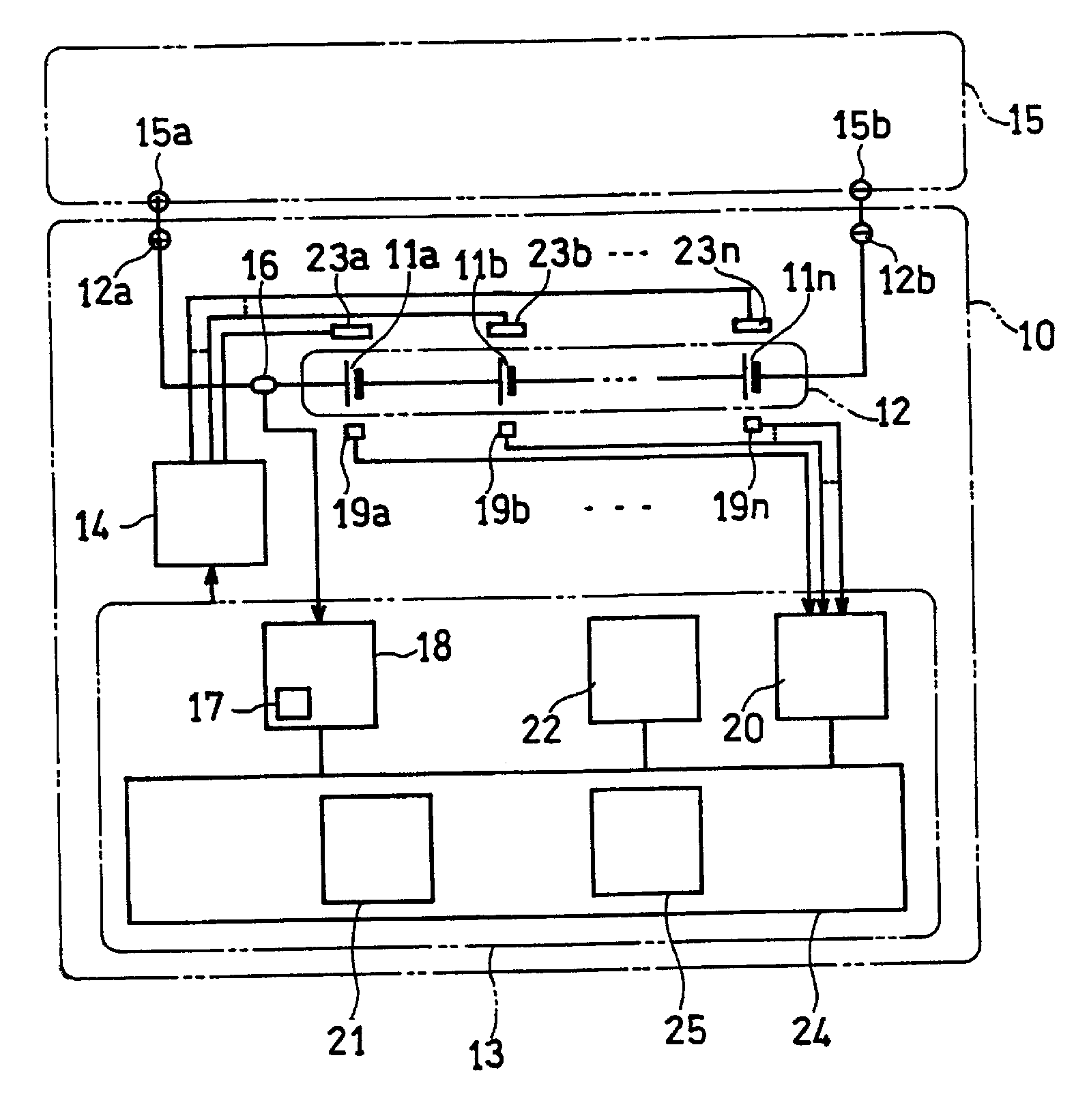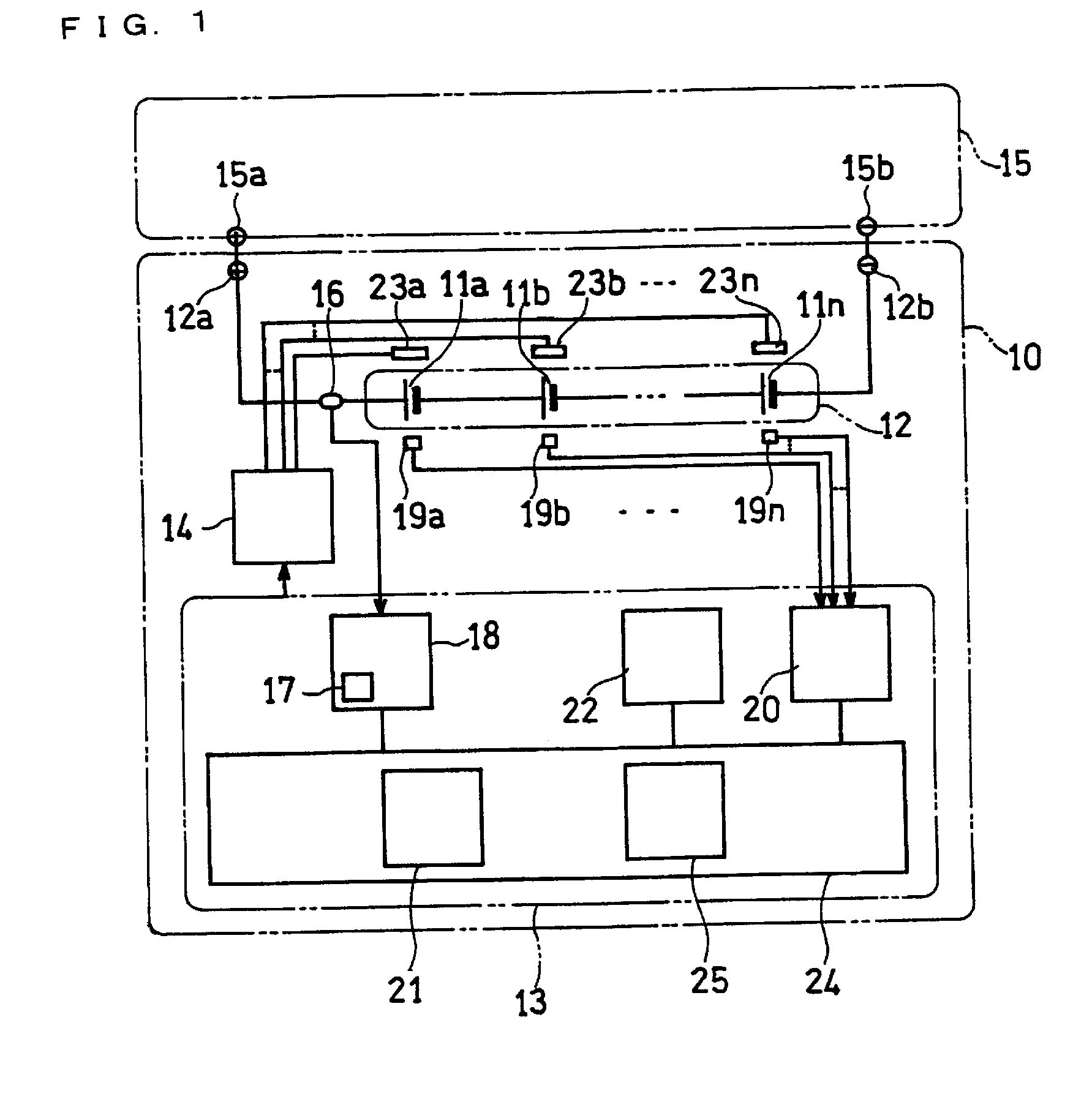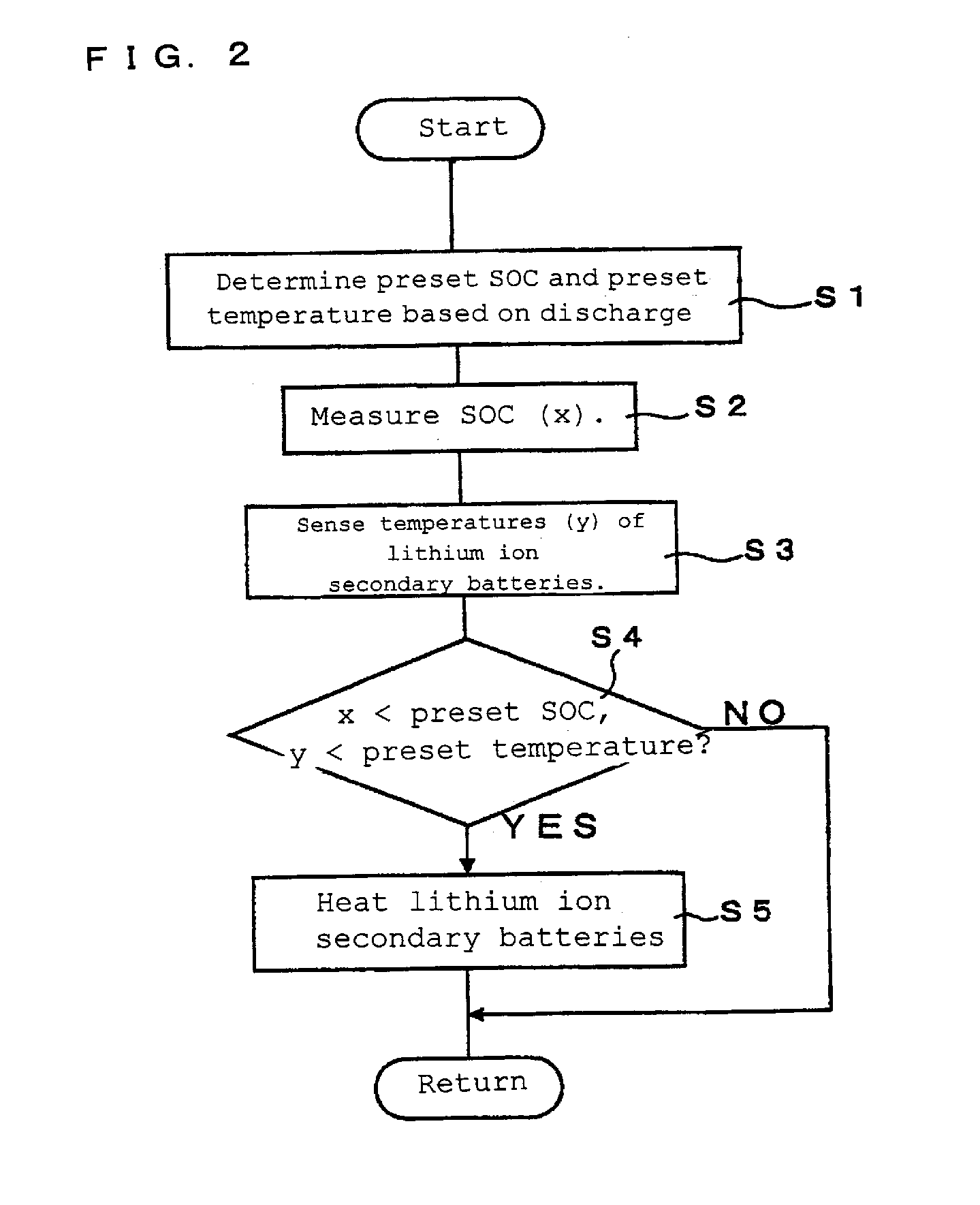Lithium ion secondary battery system and battery pack
a secondary battery and lithium ion technology, applied in the field of improving discharge control, can solve the problems of increasing the internal resistance of the battery, reducing the discharge capacity, and reducing the discharge voltage, so as to achieve the effect of suppressing the deterioration of the positive electrode active material caused by unnecessary heating, better understanding and improved discharge efficiency
- Summary
- Abstract
- Description
- Claims
- Application Information
AI Technical Summary
Benefits of technology
Problems solved by technology
Method used
Image
Examples
Embodiment Construction
[0019]The present inventor conducted detailed studies on temperature dependence and discharge-rate dependence of discharge characteristic curves for an olivine-based lithium ion battery. As a result, it was found that an olivine-based lithium ion battery differed from a cobalt oxide-based lithium ion battery in discharge behavior, and required a different approach for controlling the state of discharge, from that for a cobalt oxide-based lithium ion battery.
[0020]FIG. 4 shows discharge characteristic curves when there are changes to the ambient temperature and discharge rate, for a lithium ion secondary battery using olivine-based lithium composite phosphate as a positive electrode active material. In FIG. 4: (a) is a characteristic curve for discharge carried out at a low rate (0.2 C) in a room-temperature environment (25° C.); (b) is a characteristic curve for discharge carried out at a low rate in a low-temperature environment (0° C.); (c) is a characteristic curve for discharge ...
PUM
 Login to View More
Login to View More Abstract
Description
Claims
Application Information
 Login to View More
Login to View More - R&D
- Intellectual Property
- Life Sciences
- Materials
- Tech Scout
- Unparalleled Data Quality
- Higher Quality Content
- 60% Fewer Hallucinations
Browse by: Latest US Patents, China's latest patents, Technical Efficacy Thesaurus, Application Domain, Technology Topic, Popular Technical Reports.
© 2025 PatSnap. All rights reserved.Legal|Privacy policy|Modern Slavery Act Transparency Statement|Sitemap|About US| Contact US: help@patsnap.com



